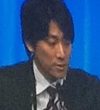P2Y12 receptor inhibitors are effective in patients experiencing NSTE-ACS, however, the administration timing is not clear. This study evaluated the administration of prasugrel at the time of diagnosis of ACS or after performing coronary angiography when angioplasty was already decided. 4033 patients were included experiencing an NSTE-ACS troponin positive who had planned angiography between 2...
SORT-OUT V: Similar results of biolimus eluting stent with biodegradable polymer versus sirolimus eluting stent with permanent polymer.
The last results of the SORT OUT V submitted in PCR 2012 showed that biolimus eluting stent with biodegradable polymer was not able to reach the non-inferiority versus sirolimus eluting stent with permanent polymer. Results to 3 years are now available, and the new device reached the non-inferiority with a MACE rate of 11.2% for...
ORBIT II: atherectomy for heavily calcified lesions
The aim of this study was to evaluate the safety and efficacy of coronary orbital atherectomy system Diamondback to prepare de novo lesions severely calcified to stent implantation. This orbital atherectomy system is the first approved by the FDA to treat this type of injury, so the study had no control group. The rate of...
APPOSITION IV: self-expanding DES in acute coronary syndrome
This study was designed to compare the apposition and neointimal coverage of struts by optical coherence tomography (OCT) of the new self-expanding sirolimus eluting stent (STENTYS SES) at 4 and 9 months in patients with STE-ACS. 152 patients randomized to STENTYS SES (n = 90) versus zotarolimus-eluting balloon-expandable stent (n = 62) were included. The...
TRYTON: dedicated stent for bifurcations not inferior than the provisional technic
This study compared the clinical and angiographic results of the use of the provisional stent technique versus the 2 stents technique (TRYTON device at the side branch) in true bifurcations. The study with non-inferiority design, randomized 704 patients in total to drug-eluting stent in the main branch plus the TRYTON device in the side branch...
NEXT Trial: Biodegradable polymer stent (Nobori) was similar to the permanent polymer stents (Xience / Promus) at 2 years.
This multicenter work from Japanrandomized 3200 patients to receive biodegradable polymer biolimus eluting stent(Nobori) or everolimus-eluting stent with permanent polymer (Xience / Promus). The primary end point for efficacy was any revascularizationlesion. A two year follow up the Nobori stent was non-inferior to death or myocardial infarction (7.83% versus 7.69%) and TLR (6.23% versus 5.95%). ...
ZEUS Trial: Patients with increased risk of bleeding may benefit from eluting stents Zotarolimus
The use of drug-eluting stents versus bare metal stents is controversial in some clinical situations in patients at high risk of bleeding.This study randomized 1606 patients considered at low risk of restenosis but with high risk of bleeding receiving Zotarolimus eluting stent (Endeavor) or conventional stent.The clinical characteristics were similar between the two groups with...
HEAT PPCI: Bivalirudin raises major cardiac events and does not reduce bleeding. The most controversial and criticized study at the ACC 14.
This randomized trial of a single center with consent obtained after randomization compared the use of bivalirudin versus heparin with the use of glycoprotein inhibitors arescue only in patients having ST segment elevation myocardial infarction.The primary efficacy endpoint was a composite of death, stroke, and myocardial revascularization of the target lesion and the primary safety...
ERASE: Endovascular treatment plus exercise versus exercise alone to treat claudication
Initial therapy for intermittent claudication has been historically the gear train, however, especially in recent years; the number of peripheral angioplasties has increased, proving highly effective for this condition. The aim of this study was to compare the clinical effectiveness of endovascular revascularization plus exercise versus exercise alone in patients with intermittent claudication. The study...
FAME II: This randomized trial compared a stent implantation guided by fractional flow reserve (FFR) with optimal medical treatment.
This randomized trial with an initial plan to include 1832 patients, compared stent implantation guided by fractional flow reserve (FFR) versus optimal medical treatment. In this study, we invasively evaluated the severity of lesion by FFR. Of this population, only patients who had lesions with significant translesional gradient (FFR <0.9) were included in the study...








